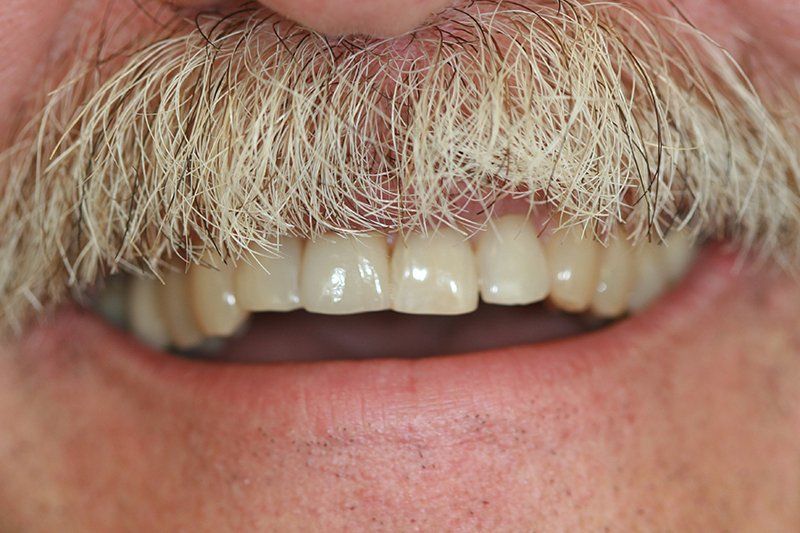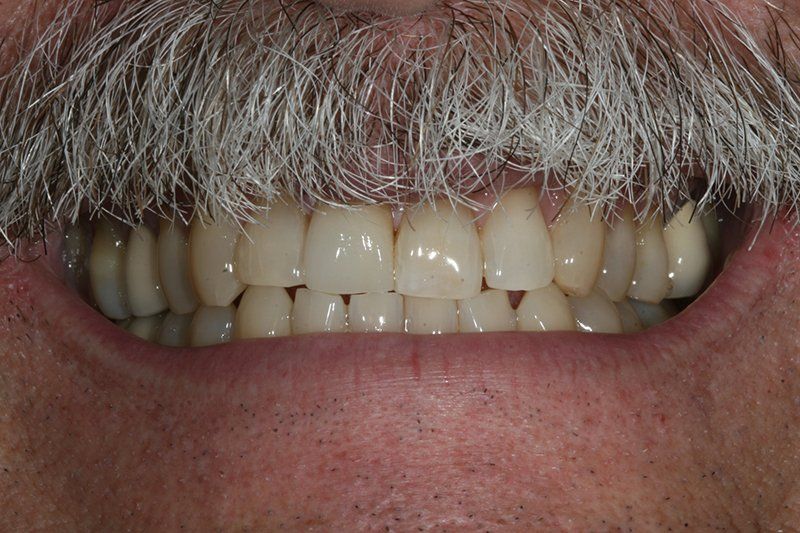Missing Teeth Causes Health Risks
Dental implants are the most conservative way to replace missing teeth.
Implants
Over the course of the past few decades, dental implants have become the standard of care for replacing missing teeth. A dental implant restoration is composed of three parts: a titanium post that acts as a root, the abutment that connects the implant to the crown and the porcelain crown that acts as a tooth. Dental implants offer patients a long-term solution for replacing their missing teeth.
The dental implant process begins with a surgical procedure that places a titanium post into the jawbone where the tooth is missing. The only portion of the implant visible during the healing stage of about 3-4 months, is the healing abutment, a small silver colored post protruding through the gums. Once the titanium post is firmly anchored to the bone, the abutment and porcelain crown can be attached to complete the tooth replacement process.
The advantages of implant restorations over fixed bridges or partial dentures are endless. Often, they are the most conservative and esthetic option for replacing missing front teeth. Implant restorations are the next best thing to your own teeth, restoring back the look and the function you lost. Just because they are titanium, does not mean they do not need any maintenance. Implant restorations require the same meticulous care as natural teeth and will fail when not properly maintained.
Missing teeth should always be replaced to prevent loss of the supporting bone. In the absence of a tooth, the bone usually supporting the root during chewing fails to be stimulated. Without this necessary stimulation, the remaining bone after the extraction atrophies as the body redistributes the minerals from that site to other areas of the body. This remodeling of the bone and the soft tissues after extractions is responsible for the sunken-faced look commonly associated with missing teeth.
In the past, dentures and bridges were the only ways for replacing missing teeth, but today implants are the state-of-the-art solution. Bridges require the filing down of at least the two adjacent teeth to replace the missing teeth between them. Dentures and partial dentures are removable appliances and should be the last option for replacing missing teeth, because although they look like teeth they do not work like teeth. Instead of connecting to the underlying bone as implants do, they are supported completely by the gums. Resting on the gums and not the bone results in a significant loss of chewing ability and biteforce. Implants are the most conservative and best option for replacing missing teeth today.
Completing Your Smile
Dental implants offer the best long-term solution for replacing missing teeth. Investing in implants will help restore your radiant smile, and your ability to chew all the foods you used to enjoy.
Longevity
Dental implants are designed to withstand life’s wear and tear, but they still require routine maintenance for optimal durability and function.
Durability
Implant-supported restorations improve the quality of your life. You can expect much more stable dentures, clearer speech, better chewing ability and a more confident smile.








